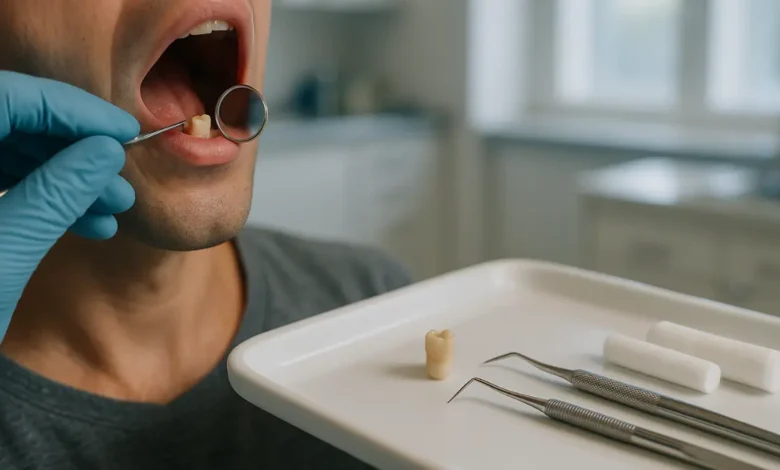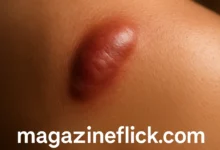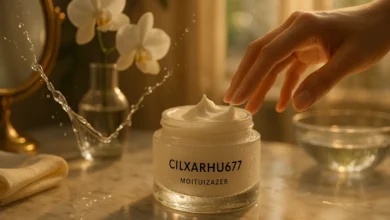What To Do When Your Temporary Crown Fell Off Weekend

If your temporary crown fell off weekend, don’t panic. Learn expert steps to protect your tooth, manage discomfort, and safely handle the situation until you can visit your dentist.
Understanding Why Temporary Crowns Exist
A temporary crown is a short-term solution placed over a tooth after it has been prepared for a permanent crown. Its main purpose is to protect the sensitive underlying tooth structure while your permanent crown is being made in a dental lab.
It shields your exposed tooth from sensitivity, prevents shifting of nearby teeth, and maintains your bite alignment. However, since temporary crowns are made from softer materials and secured with weaker cement, they’re designed to come off easily when your dentist replaces them later. This convenience also makes them more likely to fall off unexpectedly — especially on weekends, when getting dental help isn’t so simple.
When a temporary crown fell off weekend, it can be alarming, but the good news is that it’s not always an emergency. You can often take a few calm, practical steps to protect the tooth until Monday.
Common Reasons Your Temporary Crown Fell Off
There are a variety of everyday situations that can cause a temporary crown to come loose or fall out. Recognizing these helps you prevent a repeat.
Sticky or Hard Foods
Chewing gum, taffy, caramel, or even crunchy nuts can tug or push the crown loose. Temporary cement isn’t meant to withstand that much pulling pressure.
Weakened Dental Cement
The cement used for temporary crowns naturally weakens over time, especially if exposed to excessive saliva, heat, or cold. Once it begins breaking down, the bond can fail suddenly.
Bruxism (Teeth Grinding)
Clenching or grinding teeth, particularly during sleep, can stress a temporary crown until it pops off. Even slight nighttime pressure adds up.
Fit Issues
Sometimes, the tooth shape, cement thickness, or slight imperfections in the fit can make a temporary crown unstable.
Unexpected Trauma
Even something as small as accidentally biting down too hard or hitting your mouth can dislodge the crown.
So if your temporary crown fell off weekend, don’t feel alone—it’s a very common event dentists see every week.
Immediate Steps to Take When Your Temporary Crown Falls Off
If your crown pops off at an inconvenient time, here’s how to handle it calmly and effectively.
Step 1: Retrieve the Crown
Find the crown and rinse it gently with warm water. Avoid scrubbing—it’s fragile and should stay as intact as possible.
Step 2: Inspect It Carefully
Check whether it’s cracked or damaged. If it’s whole, you may be able to reattach it temporarily. If it’s broken, keep all pieces in a clean container for your dentist.
Step 3: Clean the Tooth Area
Rinse your mouth with mild warm salt water to remove food debris and bacteria. Be gentle around the exposed tooth to avoid irritation.
Step 4: Protect the Exposed Tooth
If you can’t replace the crown, cover the area with dental wax or temporary filling material (available at most pharmacies). This helps prevent sensitivity and infection.
Step 5: Avoid Chewing on That Side
Don’t use the side where the crown was for chewing food. Keep it dry and safe until reattachment.
What You Should Never Do
Sometimes, in a rush to fix the situation, people make quick choices that cause bigger dental problems later. If your temporary crown fell off weekend, avoid the following mistakes:
- Never use super glue or household adhesives. They’re toxic and can destroy both the tooth and the crown.
- Avoid eating sticky or chewy foods. This can worsen damage or cause pain.
- Don’t leave the crown off too long. The surrounding teeth might shift, and your permanent crown may not fit properly later.
- Don’t ignore pain or swelling. These may indicate infection or nerve exposure that requires urgent attention.
Being cautious prevents simple dental inconvenience from turning into an expensive emergency.
Can You Reattach the Temporary Crown Yourself?
In many cases, yes — but only temporarily and only using safe dental materials. You can find temporary dental cement or denture adhesive at most drugstores.
How to Do It Safely:
- Clean and dry both the crown and the exposed tooth gently.
- Apply a small dab of temporary dental cement inside the crown.
- Place it carefully back on the tooth, ensuring it fits snugly in its original position.
- Press down gently for a few seconds, then remove any excess cement with a toothpick or floss (slide it out sideways).
If it feels comfortable and your bite seems normal, leave it in place until your dental visit.
If it feels off, remove it — forcing an ill-fitting crown can crack the tooth beneath.
Managing Pain and Sensitivity
When your temporary crown fell off weekend, sensitivity is one of the first things you’ll feel. That’s because your natural tooth underneath is exposed to air, pressure, and temperature changes.
Relief Tips:
- Take mild pain relievers such as ibuprofen or acetaminophen as directed.
- Use a numbing gel containing benzocaine to ease local discomfort.
- Avoid extremely hot, cold, or sweet foods.
- Rinse with warm salt water twice daily to reduce inflammation.
If the pain is severe or throbbing, it may mean the nerve is exposed — in that case, you should see an emergency dentist as soon as possible.
When to Call an Emergency Dentist
Some situations require immediate care, even on weekends. Seek urgent help if you notice:
- Persistent or severe pain
- Swelling or redness around the gums
- Bleeding that doesn’t stop
- Bad taste, discharge, or signs of infection
- Difficulty biting or closing your mouth normally
Many dental offices have weekend on-call services or can refer you to an emergency clinic. If nothing’s available, urgent care centers can at least help control pain or infection until your dentist is open.
Safe Over-the-Counter Fixes
Below is a quick table summarizing what’s safe and what’s not for temporary crown emergencies:
| Material or Product | Purpose | Safety Rating | Notes |
|---|---|---|---|
| Temporary dental cement | Best option for short-term reattachment | ✅ Safe | Available at most pharmacies |
| Denture adhesive | Moderate hold | ⚠️ Safe for short use | Remove before eating or sleeping |
| Toothpaste or petroleum jelly | Weak hold | ⚠️ Temporary only | Use only if nothing else is available |
| Super glue or epoxy | Dangerous | ❌ Never use | Toxic and irreversible damage |
| Orthodontic wax | Protection only | ✅ Safe | Does not reattach, only shields exposed area |
Eating and Drinking Tips Until You See Your Dentist
With your crown missing, eating requires extra caution. Follow these guidelines:
- Stick to soft foods like soup, yogurt, scrambled eggs, mashed potatoes, or smoothies.
- Avoid sticky candies, gum, nuts, and crunchy items.
- Chew on the opposite side of your mouth.
- Limit alcohol, acidic juices, and extremely hot or cold beverages.
- Brush gently and rinse regularly to keep the area clean.
Being mindful of what you eat reduces the risk of damaging the exposed tooth or losing the crown completely.
If You Lost the Crown Entirely
If your temporary crown fell off weekend and you can’t find it, don’t panic. Call your dentist to explain the situation. They can often fit you with a new temporary crown quickly once the office reopens.
In the meantime:
- Keep the area clean with gentle rinsing.
- Avoid applying pressure or biting with that tooth.
- Cover the exposed area with wax or cotton if it feels sharp.
If any part of the crown remains, bring it to your dentist — even broken fragments can help them rebuild or refit the temporary piece.
How Dentists Fix or Replace the Crown
Once you’re back in the chair, the process is simple and painless. Your dentist will:
- Examine the exposed tooth for cracks or decay.
- Clean away old cement and bacteria.
- Check the crown’s fit and make adjustments if necessary.
- Reattach it using new temporary cement.
If the crown or tooth is damaged, they might make a new temporary crown on the spot. The goal is to protect the tooth again until the permanent crown is ready.
Transitioning From Temporary to Permanent Crown
Once the permanent crown is complete, your dentist will remove the temporary one and permanently cement the final crown. This final step ensures a stronger, more secure fit that can last for many years with proper care.
After installation, you’ll enjoy normal biting pressure again and no longer need to worry about it coming loose unexpectedly.
Long-Term Prevention Tips
To reduce the chance that your temporary or permanent crown will fall off again:
- Avoid sticky or crunchy foods for at least 24 hours after any crown work.
- Brush with a soft toothbrush and non-abrasive toothpaste.
- When flossing near the crown, slide the floss out sideways instead of snapping it upward.
- Consider a nightguard if you grind your teeth.
- Schedule regular dental cleanings and checkups to catch issues early.
Consistency is the secret to crown longevity.
Expert Quote
“A temporary crown falling off isn’t usually an emergency — but how you handle the next 48 hours can make the difference between a simple fix and a serious dental complication.”
— Dr. Melissa Carter, DDS, Restorative Dentistry Specialist
Frequently Asked Questions
Q: Is it safe to wait until Monday if my temporary crown fell off weekend?
Yes, if there’s no pain, swelling, or bleeding. Just keep the area clean and protected. If pain develops, contact an emergency dentist.
Q: Can I sleep with my temporary crown reattached using OTC cement?
Yes, if it feels stable. Avoid eating sticky foods and check that it’s not loose before sleeping.
Q: How long can I go without a temporary crown?
Try not to exceed a couple of days. The longer the tooth stays exposed, the higher the risk of movement or decay.
Q: Will my permanent crown still fit?
Usually yes, but if teeth shift due to a long delay, your dentist may need to make minor adjustments.
Q: What if my tooth starts hurting even after reattaching the crown?
Pain could mean the nerve is exposed or infected. Call your dentist immediately.
Conclusion
When your temporary crown fell off weekend, remember that calm, smart action can save your smile.
Start by protecting the tooth, using safe temporary materials, and keeping the area clean. Avoid risky adhesives, hard foods, and unnecessary delay. If pain, swelling, or infection appear, don’t hesitate to seek weekend emergency dental care.
By Monday, your dentist can reattach or replace the crown quickly, restoring both comfort and confidence. With proper care and attention, your crown — and your peace of mind — will stay secure.





